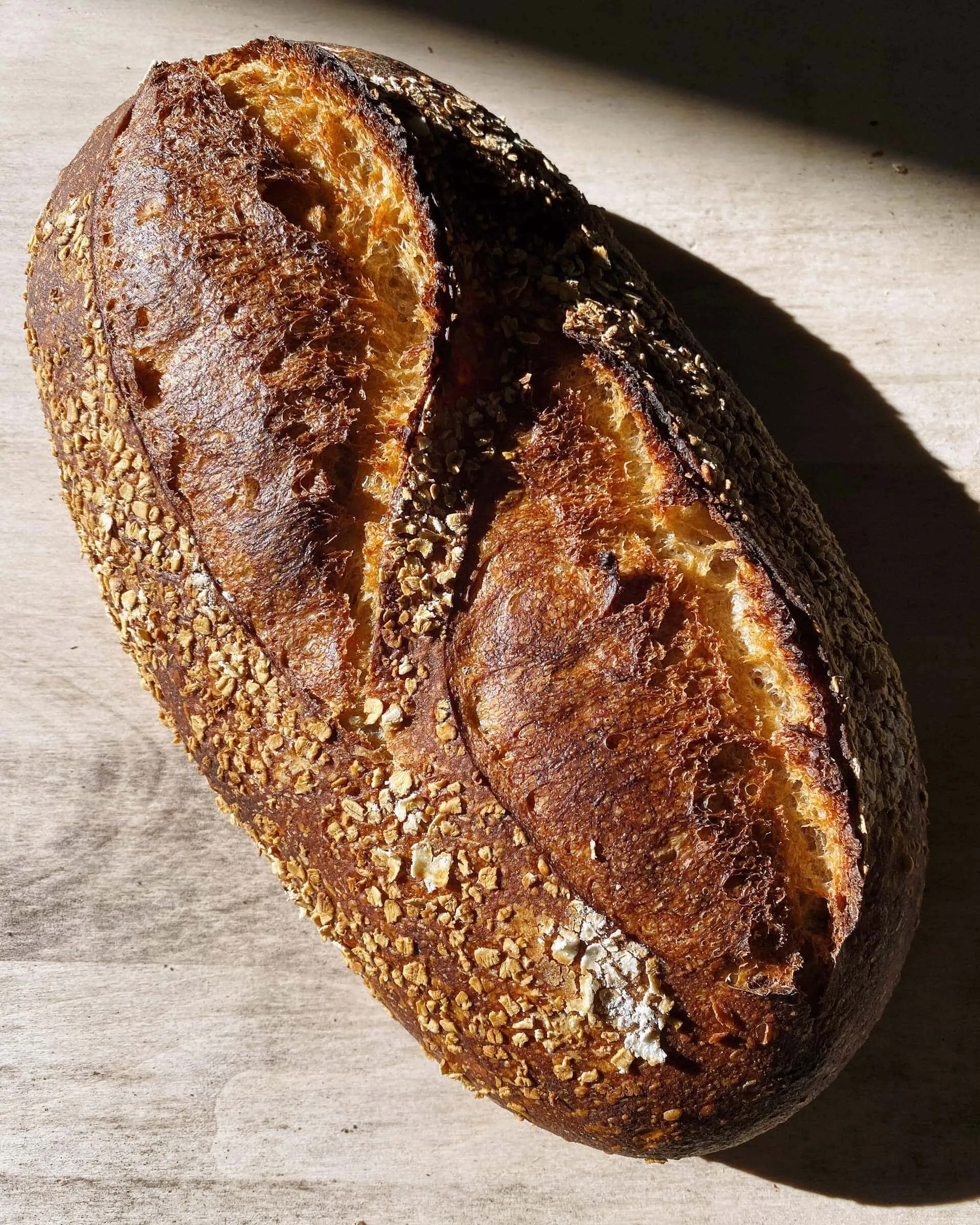Imagine the warm, inviting aroma of freshly baked bread wafting through your home, drawing everyone to the kitchen like a cozy hug. Our Spelt Rye and Whole Wheat Sourdough Bread recipe is not just a loaf; it’s a celebration of wholesome grains and artisanal craftsmanship. With its nutty flavor and delightful crust, this bread will elevate your breakfast, lunch, or dinner. Whether you’re a seasoned baker or a curious beginner, this recipe promises to deliver a stunning loaf that will impress your family and friends. Ready to embark on a baking adventure that will tantalize your taste buds? Let’s dive into the world of sourdough!
Prep Time: 15 mins
Cook Time: 50 mins
Total Time: 1 hrs 5 mins
Cuisine: Artisan
Serves: 1 loaf
Ingredients
- 1 cup spelt flour
- 1 cup rye flour
- 1 cup whole wheat flour
- 1 1/2 cups water
- 1 cup sourdough starter
- 2 teaspoons salt
Instructions
- In a large mixing bowl, combine 1 cup of spelt flour, 1 cup of rye flour, and 1 cup of whole wheat flour. Mix them together until well combined.
- In a separate bowl, mix 1 1/2 cups of lukewarm water with 1 cup of sourdough starter. Stir until the starter is fully dissolved in the water.
- Pour the wet mixture into the dry flour mixture. Using a wooden spoon or your hands, mix until a shaggy dough forms. Make sure all the flour is incorporated, but do not overmix.
- Add 2 teaspoons of salt to the dough. Pinch the salt into the dough and fold it over itself several times to evenly distribute the salt throughout the mixture.
- Cover the bowl with a damp kitchen towel or plastic wrap. Let the dough rest for about 30 minutes. This process is known as autolyse and helps to develop gluten.
- After the resting period, perform a series of stretch and folds. With wet hands, grab one side of the dough, stretch it up, and fold it over itself. Rotate the bowl and repeat this process 4 times, stretching and folding the dough every 30 minutes for the next 2 hours.
- After the stretch and fold sessions, cover the bowl again and let the dough rise at room temperature until it has doubled in size. This may take 3 to 5 hours, depending on the temperature of your kitchen.
- Once the dough has risen, lightly flour your work surface and gently turn the dough out onto it. Shape the dough into a round loaf by folding the edges into the center and then flipping it over so the seam side is down.
- Place the shaped dough into a well-floured proofing basket or bowl, seam side up. Cover it with a damp cloth and let it proof for another 30 minutes to 1 hour, or until it has puffed up slightly.
- Preheat your oven to 450°F (232°C) with a Dutch oven inside for about 30 minutes. This will help create steam for a crusty loaf.
- Once the oven is preheated, carefully remove the Dutch oven. Gently flip the proofed dough onto a piece of parchment paper, seam side down. You can score the top of the loaf with a sharp knife or a bread lame for added decoration and to help it expand while baking.
- Using the parchment paper, lift the dough and place it into the hot Dutch oven. Cover with the lid and return it to the oven.
- Bake the bread covered for 30 minutes, then remove the lid and bake for an additional 20 minutes, or until the loaf is golden brown and sounds hollow when tapped on the bottom.
- Once baked, carefully remove the bread from the Dutch oven and let it cool on a wire rack for at least 30 minutes before slicing. This allows the crumb to set properly.
Tips
- Use a Mature Starter: Ensure your sourdough starter is active and bubbly for the best rise and flavor. Feed it a few hours before you plan to bake.
- Temperature Matters: The dough's rising time can vary based on your kitchen's temperature. Warmer environments speed up fermentation, while cooler ones slow it down. Keep an eye on the dough!
- Hydration Level: If you find the dough too sticky during shaping, lightly flour your hands and work surface. However, avoid adding too much flour, as it can affect the texture.
- Stretch and Fold Technique: This method helps develop gluten without overworking the dough. Be gentle to maintain the dough's airy structure.
- Dutch Oven Magic: Preheating your Dutch oven is crucial for creating steam, which results in a beautifully crusty loaf. Don’t skip this step!
- Cool Before Slicing: Allow the bread to cool completely on a wire rack before slicing. This helps the crumb set and enhances the flavor.
- Experiment with Add-ins: Feel free to customize your loaf by adding seeds, nuts, or dried fruits for extra flavor and texture. With these tips, you’ll be well on your way to mastering the art of sourdough baking. Happy baking!
Nutrition Facts
Calories: 320kcal
Carbohydrates: 65g
Protein: 12g
Fat: g
Saturated Fat: g
Cholesterol: 0mg

